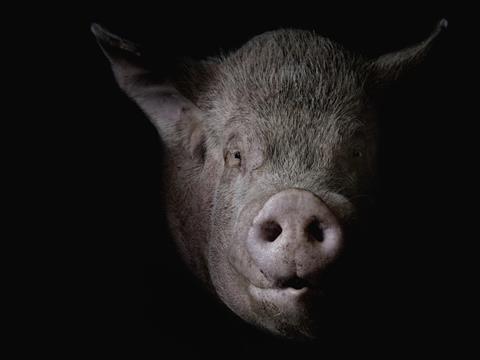
This article is part of our in-depth Meat, Fish & Poultry feature.
Late last year, the gathering storm of an “antibiotic apocalypse” finally hit the UK: government scientists found resistance to colistin - a ‘last resort’ antibiotic - in pigs and people.
The MCR-1 gene, which makes common bacteria resistant to colistin, was first discovered in China in November 2015. It has since been found in 17 countries across Europe, Africa and Asia, prompting warnings the world could be on the cusp of a “post-antibiotic era”.
Although antibiotic resistance is nothing new, the discovery of MCR-1 was a game changer. Not only did it mean the last line of human defence against infection had been breached, but it is proof antibiotic resistance can move between animals and humans - adding weight to the argument that rising resistance is down to use of antibiotics in agriculture as much as overuse in human medicine.
With this link to the livestock sector firmly established, campaigners and medical experts have called for an immediate ban on routine preventive - or ‘prophylactic’ - use of antibiotics in animals in the EU.
So what does this mean for the UK meat sector? And what is it doing to prepare itself?
Just months after MCR-1 was discovered in China, the European Food Safety Authority and European Centre for Disease Prevention and Control published a damning report warning antibiotic resistance was on the rise in Europe and posing a “serious threat” to animal and human health.
Scientists noted foodborne bugs like campylobacter and salmonella were now showing high levels of resistance to treatment, and said the “significant regional differences” in resistance across Europe supported the view that antibiotic use in livestock production was contributing to resistance.
Shortly after the EFSA/EDC report was published, a plenary session of the European parliament voted in favour of new rules curbing the collective and preventive (prophylactic) use of antibiotics in farm animals.
The draft EU legislation would prohibit the purely preventive use of antibiotics, restrict collective treatment to very specific cases, prohibit the veterinary use of antibiotics that are critically important for human medicine, and put an end to online sales of antibiotics, vaccines and psychotropic substances.
All farmers, animal owners and traders would also be obliged to apply principles of good animal husbandry and prudent use of veterinary medicines under the proposed new rules.
Although the MEPs’ proposals must still go before the European Council, all indications suggest EU lawmakers are keen to see tougher laws in place. The European Commission has pledged to monitor the actual use of animal antibiotics in member states and says antibiotic resistance is now a major political priority.
Do proposed EU antibiotic laws go far enough?
European lawmakers plan to introduce tighter rules on antibiotic use in agriculture, including a ban on the purely preventative use of the drugs. But do the new laws go far enough?
Alliance to Save Our Antibiotics campaigner Emma Rose warns there is a loophole in the proposals. A ban on the ‘metaphylactic’ use of antibiotics - where a vet can treat a group of animals when only one or a few are actually ill - is not facing MEPs in plenary, and instead being negotiated by the European Parliament’s agriculture committee, the EC and European member states.
There is a danger the curbing of collective and preventive use of medicines could be bypassed if this second regulation takes longer to progress into law, she warns. “We expect a battle on this matter from member states because the livestock industry is opposed in many cases to what they see as unnecessary regulation.”
The veterinary drug sector, meanwhile, claims the proposals are sufficient and stricter rules would have animal welfare implications.
“In the UK we have more outdoor reared pigs and higher welfare standards, but with this system there is also a far higher risk of infection as they are not in such a highly controlled environment,” says Donal Murphy, head of technical and regulatory affairs at the National Office for Animal Health.
Pressure is also mounting at UK level for stricter controls on antibiotics. The British government’s ongoing Review on Antimicrobial Resistance - which is chaired by commercial secretary to the Treasury Jim O’Neill and due to publish its final recommendations next month - has warned the use of antibiotics in agriculture represents a “critical threat to public health”, and called for a “global target to reduce antibiotic use to an agreed level per kg of livestock and fish, along with restrictions on the use of antibiotics important for humans”.
But despite stricter controls on the drugs looking increasingly likely, progress to control antibiotic use on UK farms remains painfully slow.
The Responsible Use of Medicines in Agriculture alliance (RUMA)- which represents retailers, farmers and vets - admits the routine use of antibiotics on UK farms is still commonplace.
The problem the UK has, it says, is distinguishing between routine and necessary drug use, because at the moment antibiotic usage data comes from antibiotic sales rather than on-farm data.
Steps have been made towards changing this, with RUMA currently working on systems to collect and process actual farm usage data centrally. The Red Tractor assurance scheme also added a new requirement in October 2014 for every accredited farm to collate data on all antibiotics used during the year.
Routine antibiotic use is most common in the pig and poultry sectors, where more intensive farming systems mean animals are often crowded into smaller spaces and more likely to pick up infections from each other. The performance of both sectors on monitoring drug use, however, couldn’t be more different.
Since launching its Antibiotic Stewardship Scheme in 2011, the British Poultry Council has collected data on antibiotic use and shared it with the UK’s Veterinary Medicines Directorate. In its latest update, the BPC claimed the British poultry industry had cut total antibiotic use by 44% between 2012 and 2015.

In contrast, the pig sector only launched a voluntary monitoring scheme on the use of antibiotics in pig production this month, having previously relied on sales data. “We have been in a very vulnerable position on antibiotic use, as up to now we have only held antibiotic sales data, which doesn’t account for usage,” admits National Pig Association CEO Zoe Davies. “All producers by law have to write down what drugs are used on farm but unfortunately, apart from the BPC, nobody has been collating and monitoring this data in the UK.”
The NPA’s new monitoring scheme would enable the pig sector to prepare for any future European rules on monitoring antibiotic usage, Davies says, “giving us a tool we can use straight away, and allowing producers to benchmark drug use against other systems”. It would also bring more openness to the pig sector and is part of the journey to get producers to look critically at what they are using and what is the best course of action, she says. “We’re trying to get the message over that producers have to do something to tackle antibiotic resistance, they can’t just sit there and wait.”
Of course, monitoring antibiotic use is just the first step, and even the poultry sector - held up as the most progressive UK livestock sector on antibiotics - has faced criticism over levels of antibiotic use on farms.
“All producers by law have to write down what drugs are used on farm but unfortunately, apart from the BPC, nobody has been collating and monitoring this data in the UK.”
In February, a report by the Bureau of Investigative Journalism (BIJ) revealed the use of fluoroquinolones (an antibiotic banned in the US due to links with drug-resistant forms of campylobacter) had actually risen by 59% from 2013 to 2014.
While the BPC subsequently revealed fluoroquinolone use fell again in 2015 to 2013 levels and insists it has “taken a leading role in reducing usage of antibiotics”, voluntarily banning several drugs, a second report published by the BIJ revealed the number of UK human campylobacter infections resistant to fluoroquinolones grew to its highest levels for a decade in 2015, showing there is still much work to be done.
Denmark could provide important inspiration in this regard, the O’Neill report suggests. Despite being a major global pork exporter, Denmark has one of the lowest usage rates of antibiotics, averaging less than 50mg of antibiotics per kg of livestock a year. The UK, by contrast, has usage rates of about 57mg per kg.
Denmark ramped up antibiotic controls in the mid-1990s, banning the use of tetracycline and the use of growth promoters as well as preventing vets from selling medication for profit, says professor Frank Møller Aarestrup of Denmark’s National Food Institute. Authorities also introduced a ‘yellow card’ system for those abusing antibiotic rules.
But Denmark’s focus on good animal husbandry to reduce the need for antibiotics was the key to its success, Møller Aarestrup stresses, with the country using its strong agricultural organisations to promote best practice.
Given the UK is only slightly behind Denmark in terms of antibiotic use at the moment, it arguably wouldn’t take too much effort by farmers to cut usage rates to a similar level.
Indeed, Møller Aarestrup says the UK could actually do “much better than Denmark”, arguing the Scandinavian country introduced some “very good interventions” in the 1990s and “made significant progress in tackling antimicrobial resistance” but has since “rested on its laurels”.
However, NFU animal health and welfare adviser Rebecca Veale stresses things aren’t that simple - as was demonstrated by the spike in fluoroquinolone use by the poultry industry in 2014. “The environmental and disease challenges UK livestock face are not static; they change, which in turn impacts on the levels of antibiotics used to treat farm animals,” she says. “When tools such as medicines are not available to treat disease in animals, this can have huge welfare implications on livestock.”
“When tools such as medicines are not available to treat disease in animals, this can have huge welfare implications on livestock.”
At the moment, the UK livestock industry is focusing on “responsible usage”, she says, which means using the drugs “as little as possible and as much as necessary”.
With pressure bearing down from policy makers and campaigners to cut usage, getting the balance right between reducing drug use and maintaining welfare standards could be the biggest challenge of all.




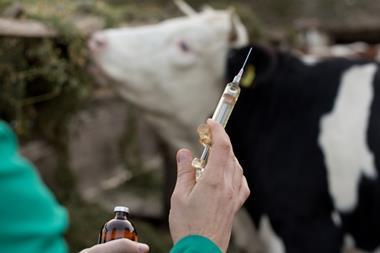
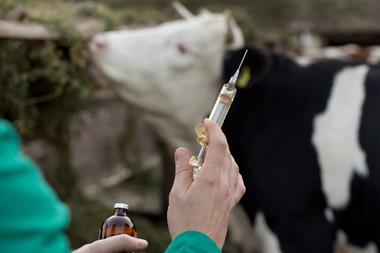
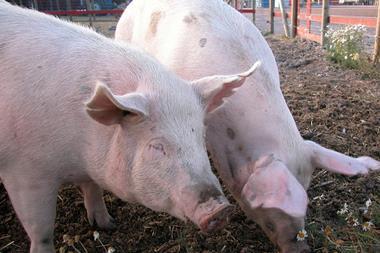
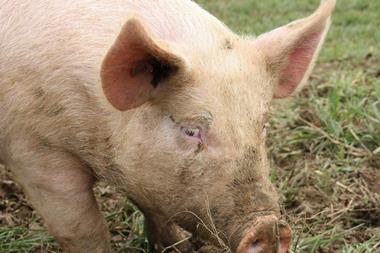
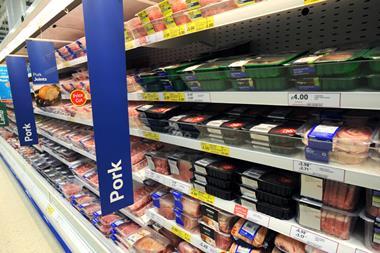
No comments yet